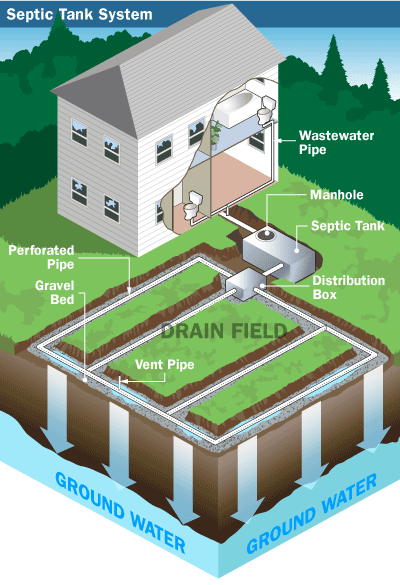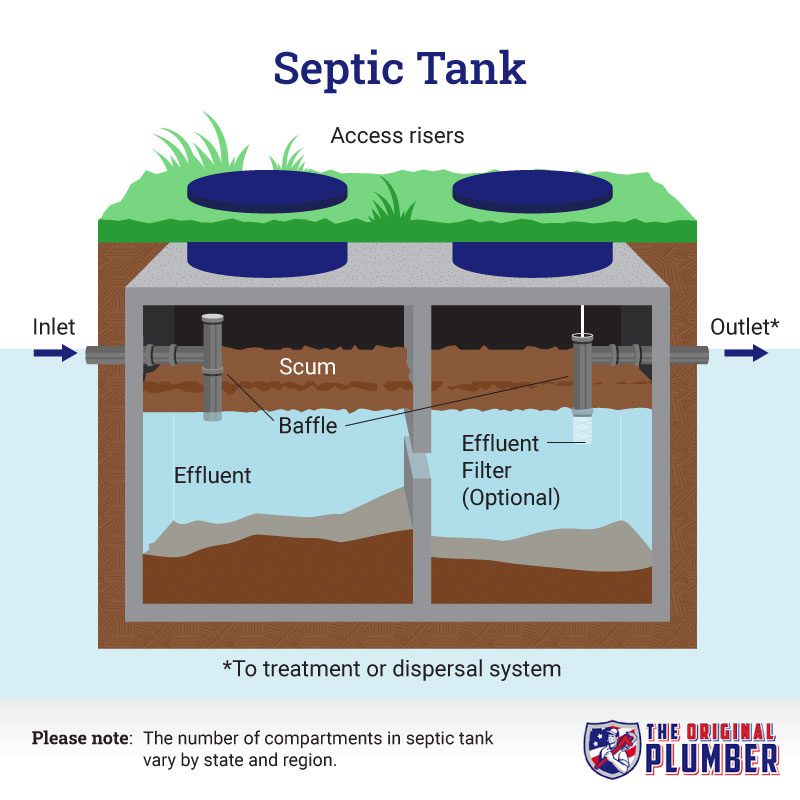Cost Effective Septic Tank Pumping Solutions: Preventing Costly Repair Works
Wiki Article
Deciphering the Language of Sewage-disposal Tank Solutions: A Glossary of Terms for Clear Interaction and Comprehending
In this post, we'll help you decode the language of septic tank solutions with a handy reference of terms. From recognizing the fundamentals of your septic tank to dealing with sludge accumulation, we'll provide clear explanations to guarantee clear interaction and understanding.Septic System: Comprehending the Basics

If you are not familiar with sewage-disposal tanks, they are underground containers that hold and treat wastewater from your home. These tanks are a vital part of your home's pipes system, in charge of safely and efficiently taking care of the waste produced by your everyday activities. Understanding the basics of septic tanks is crucial in order to guarantee their appropriate functionality and avoid costly repairs.
A septic container consists of two major components: the container itself and the drainfield. The solids clear up at the base of the tank, developing a layer of sludge, while the fluids, recognized as effluent, increase to the top.
Regular upkeep of your septic storage tank is vital to stop problems such as obstructions, backups, and system failings. It is suggested to have your tank pumped every 3 to five years, depending upon its dimension and usage. In addition, it is crucial to be conscious of what you flush away and commodes, as certain chemicals and products can damage the bacterial balance in the storage tank.
Drainpipe Field: The Duty of Soil in Waste Disposal
To preserve the correct functionality of your septic storage tank system, it is important to comprehend the duty of the drainpipe area in waste disposal and how the bordering soil plays a vital role in this process. The drainpipe field, also referred to as the leach area or absorption field, is an essential element of a septic tank. Its key function is to filter and deal with the wastewater that flows out of the septic storage tank.As soon as the wastewater leaves the septic container, it is distributed evenly across the drainpipe field via a network of pipelines or trenches. The drain field includes a layer of crushed rock or rock, which helps to distribute the wastewater evenly and advertise effective filtration. Below the gravel layer, there is a layer of dirt that serves as a natural filter.
The soil in the drain field plays a critical role in the treatment of wastewater. As the wastewater percolates through the dirt, it undertakes a natural procedure of purification and purification. The dirt works as a organic and physical filter, getting rid of damaging germs, infections, and other contaminants from the wastewater.
The make-up and top quality of the dirt are crucial for the effective performance of the drainpipe area - septic tank pumping. The soil should have good percolation prices to allow the wastewater to move through it conveniently. Furthermore, the dirt must have sufficient oxygen levels to sustain the growth of cardio germs, which aid in the break down of raw material in the wastewater

Effluent: the Fluid Waste From Your Septic Tank
As the wastewater leaves the drain area, it is called effluent, and it is necessary to recognize the attributes and management of this liquid waste from your septic tank. Effluent is the term used to describe the cured wastewater that flows out of your sewage-disposal tank and right into the drain field. septic tank pumping. This liquid waste has a mixture of water, natural issue, and dissolved solidsEffluent ought to be free and clear of any undesirable smells. It might be an indication of a problem with your septic system if you notice any kind of nasty scents or staining. Routine upkeep and pumping of your sewage-disposal tank can help ensure that the effluent continues to be clean and cost-free from impurities.
Proper management of effluent is important to avoid contamination of the surrounding setting. The drainpipe field is created to filter and deal with the effluent before it enters the soil. It is essential to avoid any type of tasks that can potentially harm the drainpipe field, such as car park automobiles or growing trees with deep root systems.
Sludge: Managing Solid Waste Buildup
When managing strong waste build-up in your septic tank, proper management of sludge is vital. Sludge describes the thick layer of solid waste that accumulates at the base of your sewage-disposal tank in time. If not taken care of correctly, sludge can create numerous problems, such as blocking, backups, and even system failure.Regular maintenance is essential to prevent sludge buildup. It is suggested to have your sewage-disposal tank pumped every three to 5 years, depending upon the size of your home and the storage tank's capacity. Pumping removes the gathered sludge, enabling your septic system to function efficiently.
Be mindful of what you purge down the drainpipe. Second, take into consideration making use of septic-safe items that will not interfere with the Home Page all-natural microbial equilibrium in your system.
Pumping: Maintaining the Health And Wellness of Your Sewage-disposal Tank
Preserve the health and wellness of your septic tank by consistently pumping it. Pumping is an important maintenance task that helps stop troubles and makes certain the correct performance of your septic tank. Over time, strong waste and sludge gather in the container, which can bring about obstructions, back-ups, and also system failing. Pumping eliminates these collected solids, permitting the tank to proceed running effectively.The regularity of pumping depends on different aspects such as the dimension of the tank, the number of owners in your home, and the usage of water. On average, septic tanks must be pumped every 3 to five years.
Conclusion
So there you have it: a handy reference of terms to help you better recognize the language of septic container solutions. Whether it's finding out about the essentials of septic systems, recognizing the role of the drainpipe area, or knowing exactly how to handle sludge buildup, this reference will certainly guarantee clear communication and a much better understanding of your septic tank. Maintain have a peek here these terms in mind to maintain the health and wellness and capability of your septic system.A septic container is composed of two main components: the tank itself and the drainfield.Routine upkeep of your septic container is vital to prevent problems visit site such as blockages, backups, and system failings.To keep the appropriate performance of your septic container system, it is crucial to understand the role of the drainpipe area in waste disposal and just how the bordering dirt plays a crucial function in this procedure. It is advised to have your septic storage tank pumped every 3 to five years, depending on the dimension of your house and the tank's capability. Whether it's discovering regarding the fundamentals of septic storage tanks, recognizing the role of the drain area, or recognizing exactly how to deal with sludge build-up, this glossary will certainly make certain clear interaction and a far better understanding of your septic system.
Report this wiki page